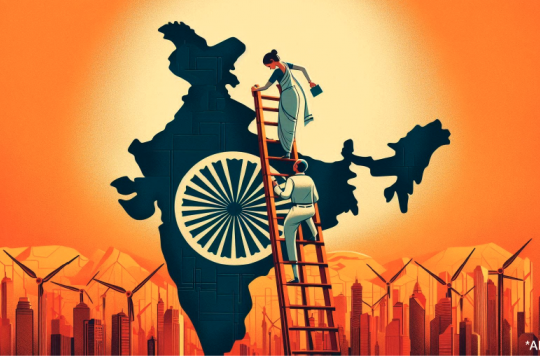India’s newly formed government aims to make the country Vixit (developed) by 2047. This calls for improving India’s gender parity in socio-economic outcomes, according to Farzana Afridi (Professor of Economics at Indian Statistical Institute, Delhi). She pens key policies that can propel the country in this direction in an op-ed article in the India Express.
The article discusses the pivotal role of investing in women’s human capital to achieve gender parity in India's socio-economic development. Despite historically low employment rates compared to China and Bangladesh, India’s economic growth could be significantly enhanced by increasing women’s labor force participation (LFP) from the current 25% to 50%, potentially achieving an 8% GDP growth rate. To achieve this, the new central government can implement the following policies:
- The government should focus on expanding the manufacturing sector, particularly in labor-intensive industries like garments and footwear, which predominantly employ women. The Production Linked Investment (PLI) scheme could be leveraged to boost production in these sectors, addressing employment and growth simultaneously.
- It should also enhance the formal sector and improve skilling programs, especially for women. Only a small percentage of women enroll in Industrial Training Institutes (ITIs). Increasing the number of women-focused training centers and providing financial support through scholarships and loans could bridge this gap. Integrating career counseling and job placement services within training programs can improve employment outcomes for women.
- Urbanization requires policies that promote women’s mobility and safety, enabling them to access education and employment opportunities. Developing gender-sensitive urban infrastructure and public transportation is essential. Creating subsidized urban care facilities can reduce the domestic workload on women and generate new job opportunities in the care sector.
While these policies can significantly contribute towards drawing women into public spaces, letting them out of their homes and reducing domestic drudgery is another challenge to conquer. In rural areas, clean energy adoption can free women from time-consuming household chores such as collecting firewood. Expanding initiatives like the Pradhan Mantri Ujjwala Yojana (PMUY) has been a key milestone in this transformation. Adopting strategies from global examples, such as the Biden administration’s Inflation Reduction Act, can further support this transition.
In conclusion, a multifaceted approach involving economic, educational, infrastructural, and technological interventions is crucial for empowering women and achieving gender parity. This strategy not only fosters individual well-being but also propels India toward its goal of becoming a developed nation. By addressing these areas, India can unlock its full economic potential and ensure inclusive growth, driven by the power of its women.
The original article first appeared as an Op-ed in the Indian Express.
The writers of this blog post are Gautam Raj & Sneha Ganguly. Gautam is a Consultant (Project & Communication Manager) at DP-WEE Program, LEAD, IFMR and Sneha is Project Manager at DP-WEE Program, CECFEE, ISI Delhi.
